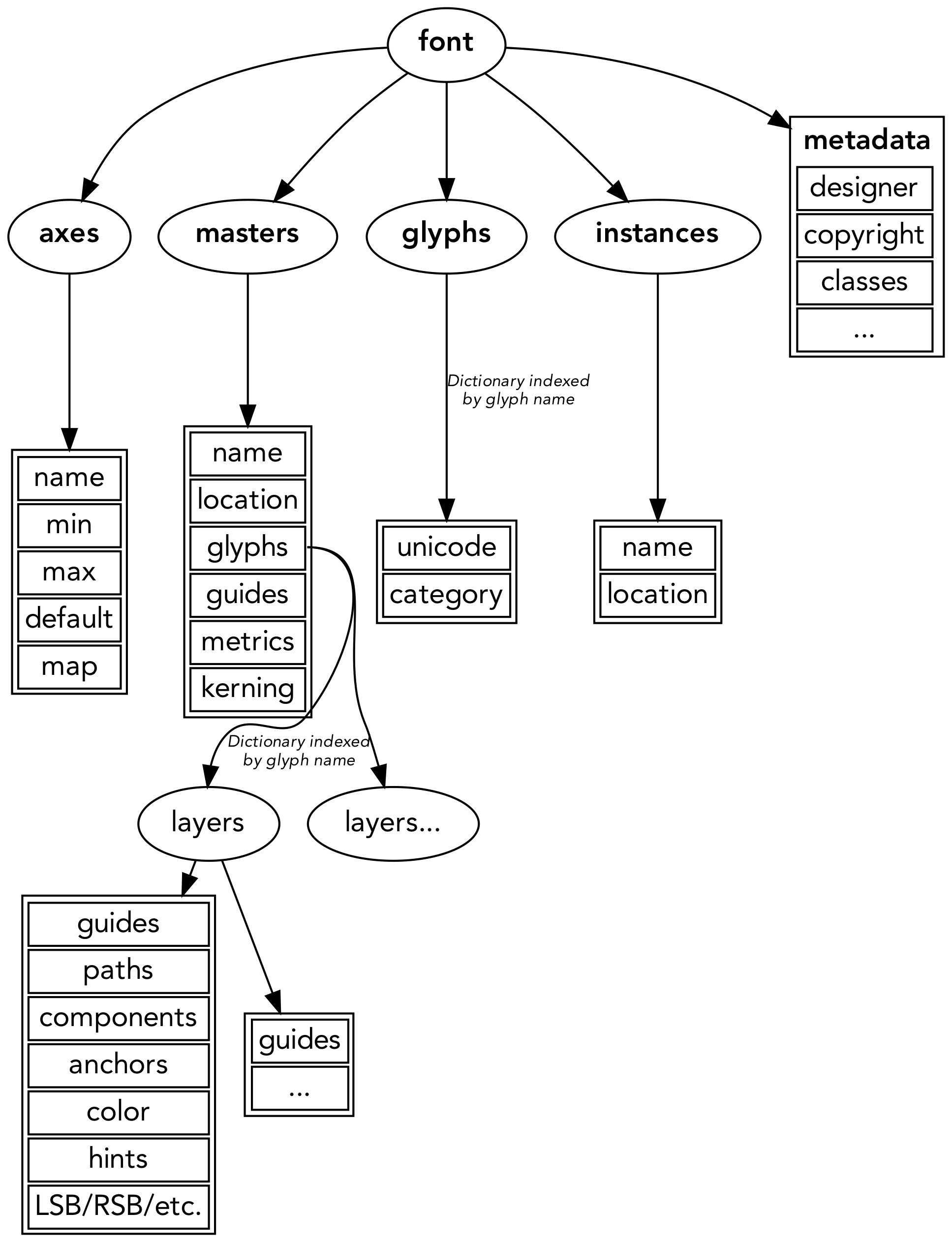Why have masters at all? I understand how they came to be historically and the case for instances (a set of static locations on axes) but if you're designing a new on-disk and object format, why not drop the charade and just go straight for glyphs? Each glyph would have control points that are not just a pair of coordinates but but vectors with enough values to locate them through each axis. Editors could use the instance location data to draw what people currently think of as "masters", but if you're coming up with a new model for holding the data I don't think dragging the current paradigm with you is necessary.

Ideas for hierarchy so far: